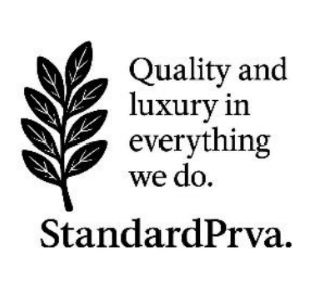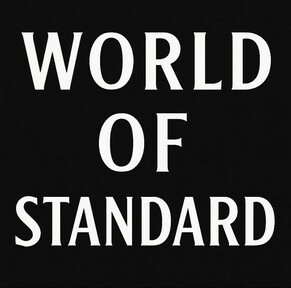Case Analysis: Do the Decisions of the U.S. Federal Reserve Affect Interest Rates in Bosnia and Herzegovina and the Situation in the Region?
29.06.2025Photo: The Economist
The decisions of the Federal Reserve (Fed) regarding key interest rates have global reverberations, and their impact extends to Europe and Bosnia and Herzegovina. While the Fed has been aggressively raising rates in recent years to combat inflation, European banks — including those in Bosnia and Herzegovina — feel the indirect consequences through movements in Euribor and the specific currency board monetary regime.
Global domino effect: from the Fed to the ECB
When the U.S. Federal Reserve raises interest rates, it triggers a chain reaction in global financial markets. Investors redirect capital toward dollars due to higher yields, which strengthens the U.S. currency and pressures other central banks to tighten monetary policy as well. The European Central Bank (ECB) typically lags behind the Fed but aims to maintain relative parity to prevent excessive euro depreciation against the dollar. If the Fed hikes sharply while the ECB hesitates, the dollar strengthens, and a weaker euro raises import prices (especially energy), fueling inflation in the eurozone. As a result, in 2022 and 2023, the ECB followed the Fed’s pivot toward tighter policy — albeit with a delay — raising its reference rates from zero to record levels.
This coordinated action by the Fed and ECB was necessary because global inflation reached peaks unseen in decades: by mid‑2022, U.S. inflation was the highest since 1981, while eurozone inflation hit a 40‑year high. Until inflation in both economies is firmly held below the 2% target, neither the Fed nor the ECB are considering significant policy easing. Early in 2024, experts estimated the rate‑hiking cycle was nearing its end and that central banks might begin cutting rates later that year — but cautiously and gradually, depending on inflation trends. Indeed, the Fed briefly paused its rate hikes at the end of 2023, and the ECB, after reaching a peak of 4.5% for its key rate, also paused to prepare for cuts. Projections suggested a slight Fed rate cut in the second half of 2024, while the ECB was expected to ease more quickly due to a slowing European economy.
Euribor and the currency board: transmission into Bosnia and Herzegovina
In Bosnia and Herzegovina, the transmission of global interest rate changes comes mainly through European interest rates and the currency board. The country has a currency board—a fixed exchange rate of the Convertible Marka (KM) tied to the euro—which means the Central Bank of BiH does not conduct its own independent monetary policy or set reference rates. Instead, interest rates in BiH follow eurozone trends. When major central banks (like the Fed and ECB) raise their key rates, domestic rates are expected to rise in theory. In practice, there are frictions and delays in this transmission: BiH banks try to raise rates on loans (especially those linked to Euribor) but balance this carefully to avoid causing repayment delinquencies or dampening demand for new loans.
Euribor—the reference interbank rate in Europe—is the key link to BiH. Many BiH banks offer variable-rate loans tied to Euribor (typically 6‑ or 12‑month) plus a fixed margin. During the era of ultra-low rates, Euribor was negative, and loan rates in BiH were historically low. However, the ECB’s policy shift reversed that trend: 6‑month Euribor jumped from below zero to around 3.5–4% during 2022–2023, automatically raising loan payments for households and businesses. In Banja Luka, for example, the monthly mortgage payment on a 66,000 KM loan tied to Euribor rose from 342 KM in 2019 to 413 KM by March 2023 due to the Euribor increase. In just two years, payments rose by about 20%, illustrating how the global interest shock directly impacts BiH debtors.
Fortunately, banks partially mitigated the transmission. Aware that sharp interest hikes could cause repayment issues for existing clients, many offered fixed rates in the early years of loans or limited the increase in variable rates. Regulators responded as well: the Banking Agency of the Federation of BiH noted that its measures largely prevented a significant pass-through of the Euribor rise to domestic rates. Rate increases occurred only in parts of the loan portfolio tied to EU reference rates—and even then, typically not more than 2 percentage points. In other words, a typical variable-rate loan in BiH became only a couple of points more expensive despite Euribor jumping over 4 points. This shows that the rigidity of the currency board has been somewhat softened by the action of commercial banks and domestic regulators.
Current interest rate situation in Bosnia and Herzegovina
By the end of 2024, interest rates in BiH reached their highest levels in recent years, but without signs of a full breakdown in credit activity. According to the Central Bank of BiH, interest rates rose across most loan segments, with slight oscillations and early signs of stabilization. The average nominal interest rate on newly approved loans to households at the end of 2024 was about 6.67% effective (including fees), comparable to the average of the past five years. While loans are indeed more expensive than during the negative-Euribor period, current rates are not dramatically higher than multi-year averages—thanks to the limited pass-through mentioned.
Mortgage loans: For new variable-rate mortgages in KM, the average nominal rate was 4.28% at the end of 2024, slightly lower than 4.98% at the end of 2023. This suggests that Euribor peaked in mid‑2023 and then began declining, leading to lower variable-rate mortgage payments. Conversely, fixed mortgage rates for loans with maturities over 10 years rose from an average of 3.79% to 3.92% during 2024, as banks now price in ongoing market uncertainty. So, new home buyers face a choice between slightly higher fixed rates around 4% or variable rates around 4.3%, which are beginning to ease as Euribor recedes.
Consumer (cash) loans: These unsecured loans generally carry higher rates. At the end of 2024, fixed interest rates on cash loans in KM (1–5 year tenor) averaged 5.33%, slightly down from about 5.85% a year earlier. Banks evidently reduced rates on short-term cash loans to remain competitive and stimulate demand, as citizens are sensitive to consumer loan rates. Still, the effective cost (including fees) remains high—often 6–7%—so consumers slowed borrowing in 2024. Non-purpose consumer loan volumes stagnated, while purpose-specific loans (e.g., for cars or durable goods) and mortgages grew. This suggests that people are borrowing more thoughtfully—primarily for investments or necessary purchases, rather than impulsive spending.
Business Loans: Interest rates for companies have also risen, especially for smaller, shorter-term loans. For fixed-rate loans up to €0.25 million with a 1–5 year tenor, the average interest rate climbed from 4.65% to 5.16% during 2024. For large variable-rate loans over €1 million, rates increased from 4.19% to 4.93%. Larger clients, often tied to Euribor, felt the increase, while smaller businesses are mostly on fixed rates that banks adjust according to new conditions. Importantly, credit activity remains robust—with total loans to businesses and households in BiH rising by around 9% in 2024. So, despite higher borrowing costs, demand for credit hasn’t stalled; companies and individuals continue borrowing, indicating some optimism or a need to sustain consumption and investment.
No Massive Rate Decline (Yet): As of late 2024, there was no uniform decline in interest rates in BiH—just category-specific adjustments. Rates plateaued: slight reductions for housing and certain consumer loans, while others remained high or continued rising. Regulators note that BiH’s current rates remain similar to the past five years and are expected to remain so through 2025. In other words, nothing dramatic has happened: no runaway increase (which might have occurred if BiH fully tracked Euribor), but no significant easing yet either. BiH entered 2025 with stabilized yet somewhat elevated rates, far from historical highs seen in past crises.
Is Rate Decline in Sight?
The key question for debtors in BiH is when interest rates will start to fall significantly. Optimistic early-2024 projections predicted noticeable credit cost cuts by spring, due to expected Euribor declines—but these didn’t materialize. Economists projected only a “loose Euribor drop”—a mild and gradual decrease through the year. Indeed, after peaking around 4%, Euribor has inched downward. However, shifts have been too small for borrowers to immediately feel relief through significantly lower payments. Experts warned that no real impact would be felt until central banks made concrete cuts, contingent on inflation cooling: “As long as inflation does not fall below 2%, there will be no reference rate cuts,” policymakers repeatedly stated. In early 2024, it appeared conditions might be met by mid-year—and projections expected the Fed to make its first cut in June 2024, followed by the ECB.
Now, by mid-2025, it’s clear that easing has begun—but very cautiously. From summer 2024 to spring 2025, the ECB has cut its rates multiple times by a total of around one percentage point. Reports show that by February 2025, the ECB’s deposit rate had fallen to 2.75%, and the main refinancing rate to 2.9%. The Fed, on the other hand, delayed cuts due to persistent inflation—making its first symbolic reductions only late in 2024. This gradual monetary easing at the top of the transmission chain is slowly trickling down to Euribor and market rates. The six‑month Euribor, which was about 3.8% in mid-2023, had fallen below 2.5% by the end of 2024, according to analysts. That’s a positive sign—Euribor’s downward trend means smaller variable loan rates. Indeed, variable-rate mortgages in BiH were slightly cheaper in early 2025 than in mid-2023.
Still, a dramatic overnight drop is unlikely. The Banking Agency of the Federation of BiH notes that ECB easing has yet to lead to a significant decline in loan rates in BiH. Rates are likely to remain at current levels until ECB reference rates are closer to the 2% target. Only once Euribor and similar rates dip back to pre-crisis levels can banks broadly cut new loan prices. According to current projections, this might happen late 2025 or early 2026, depending on how fast eurozone inflation approaches target and how quickly the ECB can ease policy. Meanwhile, we can expect “creeping” cost reductions—several small rate cuts tied to gradual Euribor decline—but no sudden relief. For consumers and businesses, this means entering 2025 with relatively high borrowing costs, but with hope that each quarter brings slightly lower rates—gradually boosting credit demand and investment.
Comparison with Serbia and Croatia
Serbia: Unlike BiH, Serbia has its own currency (the dinar) and central bank, allowing independent monetary policy. From early 2022 to mid‑2023, the National Bank of Serbia (NBS) raised its reference rate from 1% to 6.50% to tame inflation above 10%. This 6.5% level was maintained for nine months. As inflation slowed to around 4% by late 2024, NBS cautiously cut rates three times in summer 2024—to 5.75% (0.25 p.p. each in June, July, and September)—and has held that level since. Unlike the ECB, which tightened late and eased slowly, NBS tightened early and eased faster. The current 5.75% reference rate remains high but may fall further toward 5% or lower by late 2025 if disinflation continues.
A distinctive measure in Serbia was direct borrower protection. At the end of 2023, NBS and the Serbian government temporarily capped interest rates on euro-indexed mortgages at 5% annually until end-2025. This applied to both new and existing loans, effectively freezing payments for over 100,000 borrower households. As a result, mortgage payments stopped rising at around 5%—similar to BiH levels, but Serbia’s cap is legally enforced. After 2025, Serbia plans to lift the cap and link it to market averages plus a margin, but by then Euribor should have fallen enough to keep rates around or below 5%. Serbia also capped dinar consumer loan rates (cash loans currently limited to about 13.75%). These measures were designed to prevent a borrower crisis during the rapid rate increases in 2022/23. So far, they’ve worked: Serbia’s housing market stabilized, non-performing loans remain low, and borrowers expect lower payments by late 2024 or early 2025, when ECB easing filters into Euribor and the dinar rate.
Croatia: Neighboring Croatia is a special case, as it joined the eurozone on January 1, 2023. It effectively relinquished its monetary policy to the ECB—similar to BiH, but without a currency board, using the euro directly. As eurozone rates rose, Croatian banks gradually increased deposit and loan rates—but early 2025 saw the first signs of decline. According to the Croatian National Bank (HNB), average April 2025 interest rates for both deposits and loans were lower than a year earlier. For instance, average mortgage rates were only 2.91% in April 2025—significantly lower than in BiH—while consumer loan rates averaged 5.63%. These represent drops of nearly 0.8 p.p. for mortgages and around 0.4 p.p. for consumer loans year-over-year. Clearly, Croatian banks have more quickly passed on Euribor cuts to end users, likely due to stronger competition and direct j euro usage reducing currency risk. Business loan rates in Croatia also declined: short-term corporate loans average around 3.2%, and long-term around 4.3%, nearly one point lower than a year earlier. For deposits, interest rates also began to decrease after rising in 2023: a short-term term deposit earned about 1.5% in April 2025 (down from 1.8% a year earlier), indicating banks have started reducing funding costs after a scramble to attract savers.
In summary, Croatia is already benefiting from eurozone rate cuts, while BiH remains cautious. The difference lies in Croatia’s full market integration: once the ECB cuts, it shows up quickly in Euribor and HNB statistics. Despite its euro link, BiH has a different loan structure (higher share of fixed rates, regulatory measures, different risk assessment), making transmission slower and milder. Serbia, however, had much higher rates than BiH and Croatia during the hike cycle due to currency risk—but now its rate cuts are under direct NBS control and depend on domestic inflation and dinar dynamics.
Conclusion
The interest rate decisions of the U.S. Federal Reserve, indirectly through the actions of the European Central Bank (ECB) and movements in Euribor, have had a significant impact on banks in Bosnia and Herzegovina. In recent years, this influence has been felt through more expensive loans. However, thanks to the currency board arrangement and decisions by banks and entity-level regulatory agencies, BiH has avoided extreme shocks. Interest rates are currently high but stable, with the first signs of a downward trend.
Looking ahead, BiH shares Europe’s fate: when the Fed and ECB determine that inflation is under control and begin to cut their rates more aggressively, banks in Bosnia and Herzegovina will also reduce their lending rates more significantly. Until then, the country faces a period of belt-tightening with costly loans, but also a glimmer of hope that global financial winds will soon shift in favor of borrowers rather than lenders.
Sources: Central Bank of BiH / FBA, N1, Federalna.ba, Capital.ba, Novosti.rs, NBS, HNB, Bloomberg Adria, Al Jazeera Balkans
/ / /
"Standard Prva" LLC Bijeljina is a company registered in Bijeljina at the District Commercial Court in Bijeljina. Company’s activities are accountancy, repurchases of receivables, angel investing and other related services. Distressed debt is a part of the Group within which the company repurchases the receivables, which function and are not returned regularly.
Lawyer’s Office Stevanović is the leading lawyer’s office in the region with the seat in Bijeljina. The LO abbreviation represents Lawyer’s Office of Vesna Stevanović and Lawyer’s Office of Miloš Stevanović.
Contact for media press@advokati-stevanovic.com or via telephone 00 387 55 230 000 or 00387 55 22 4444.





